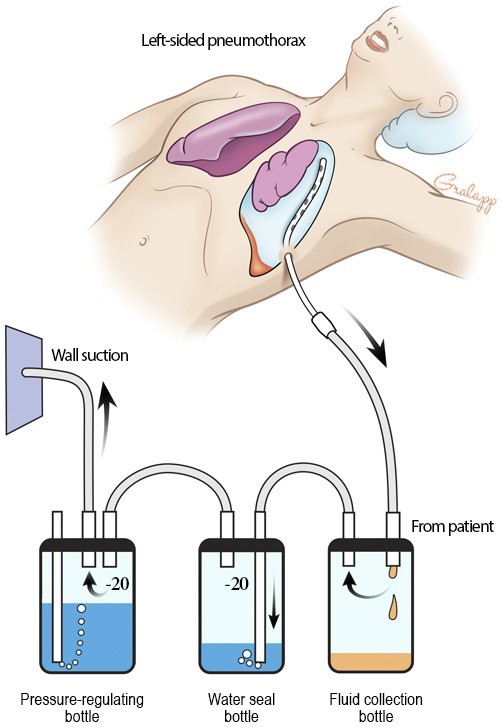Admission Assessment Day 1, 1000:
An older adult client was transferred to the ICU after they developed a fever and hypotension. The client was initially admitted 4 days ago with a left hip fracture and subsequently underwent total left hip arthroplasty. The client is alert and oriented to person, place, and time. The client's partner is at the bedside.
Past Medical History: hypertension, congestive heart failure, Parkinson's disease Allergies: penicillin (anaphylaxis)
Social History: The client has visual loss but didn't bring their glasses. The client is hard of hearing. Hearing aids in place.
Which of the following actions should the nurse take? Select all that apply.
Request that the client's family bring the client's eyeglasses from home.
Reorient the client often.
Acknowledge the client's feelings.
Provide the client with information about what to expect during their care.
Write the full date on the client's whiteboard.
Ask the client's partner to stay with the client as much as possible.
Maintain a well-lit environment.
Request that the client have the same caregivers with every shift.
Correct Answer : A,B,C,D,E,G
-
-
- Request that the client's family bring the client's eyeglasses from home: This is important to ensure that the client has optimal vision and can see clearly, considering their visual loss. Having their eyeglasses will improve their ability to communicate and understand their surroundings.
- Reorient the client often: Reorientation is important for clients who may be disoriented due to their medical condition or unfamiliar environment. Regularly reminding the client of their location, date, and situation can help them maintain orientation.
- Acknowledge the client's feelings: Acknowledging and validating the client's feelings can help establish rapport and promote a therapeutic relationship. It shows empathy and understanding, which can contribute to the client's overall well-being.
- Provide the client with information about what to expect during their care: Providing information to the client about their care helps promote autonomy and active participation in their own healthcare. It can reduce anxiety and improve the client's overall experience.
- Write the full date on the client's whiteboard: Clearly documenting the full date on the client's whiteboard helps the client stay oriented to the current date and time.
- Maintain a well-lit environment: Ensuring a well-lit environment is important, especially for clients with visual impairment. Sufficient lighting can enhance the client's ability to see and navigate their surroundings.
-
It's worth noting that while asking the client's partner to stay with the client as much as possible may be beneficial, it may not always be feasible or within the nurse's control. Additionally, requesting the client to have the same caregivers with every shift may not be possible due to staffing constraints.
Nursing Test Bank
Naxlex Comprehensive Predictor Exams
Related Questions
Correct Answer is A
Explanation
Ensuring the device is kept below the level of the client's chest is important to ensure that the drainage system functions properly by allowing the fluid and air to flow downhill. Placing the device below the level of the chest helps facilitate gravity drainage.

Continuous suction is required for proper functioning of the chest tube drainage system. Clamping the chest tube can disrupt the suction and impede the removal of air or fluid from the pleural space. Only in specific circumstances, such as when changing the drainage system or assessing for air leaks, may the healthcare provider request a temporary clamping of the chest tube.
Positioning the client semi-Fowler's, with the head of the bed elevated, can help promote lung expansion and improve oxygenation. The specific positioning may vary depending on the client's condition and the healthcare provider's recommendations.
The nurse should empty the collection chamber as per the facility's protocol, which typically includes monitoring the drainage and emptying it when it reaches a certain level. Regular emptying of the collection chamber helps maintain proper functioning of the chest tube system and allows for accurate measurement of drainage output.
Correct Answer is A
Explanation
Promoting trust involves actions that build a sense of trust and rapport between the nurse and the client. In this scenario, the nurse recognizes the client's basic need for food and responds to it promptly and compassionately. By interrupting the bath to address the client's hunger, the nurse demonstrates attentiveness and care, which helps establish trust between the nurse and the client.
B. Countertransference refers to the nurse's emotional reaction or response to the client, which may be based on the nurse's personal experiences or unresolved issues. It does not apply to the nurse's action of obtaining a meal for the client.
C. Veracity refers to truthfulness and honesty. While the nurse's action can be seen as honest and caring, it does not specifically relate to the concept of veracity.
D. Boundary crossing refers to a situation where the nurse exceeds the established professional boundaries with the client. In this scenario, the nurse's action of obtaining a meal for the client can be seen as a minor deviation from the routine care but is not considered a significant boundary crossing.
Whether you are a student looking to ace your exams or a practicing nurse seeking to enhance your expertise , our nursing education contents will empower you with the confidence and competence to make a difference in the lives of patients and become a respected leader in the healthcare field.
Visit Naxlex, invest in your future and unlock endless possibilities with our unparalleled nursing education contents today
Report Wrong Answer on the Current Question
Do you disagree with the answer? If yes, what is your expected answer? Explain.
Kindly be descriptive with the issue you are facing.
